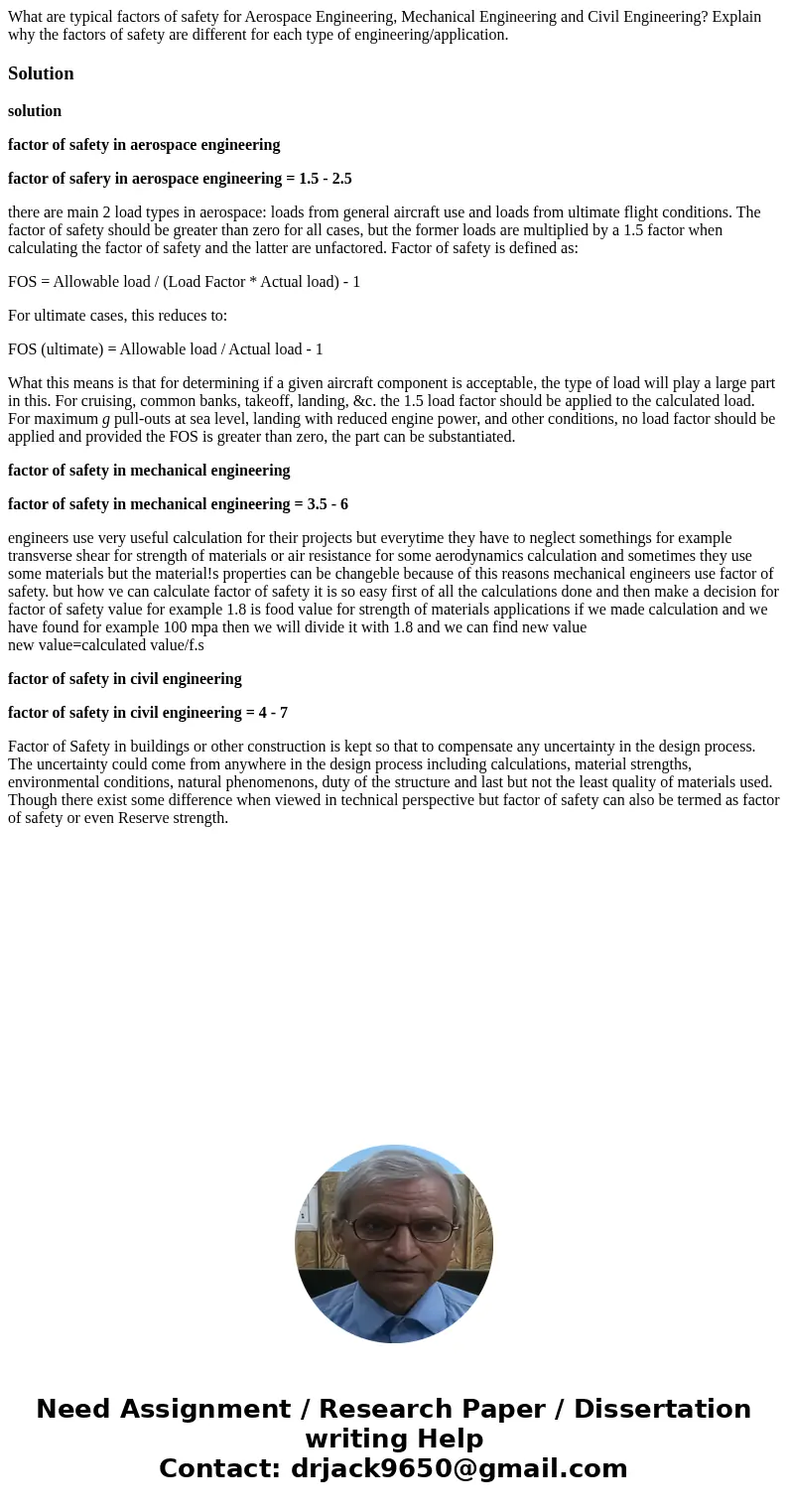What are typical factors of safety for Aerospace Engineering
What are typical factors of safety for Aerospace Engineering, Mechanical Engineering and Civil Engineering? Explain why the factors of safety are different for each type of engineering/application.
Solution
solution
factor of safety in aerospace engineering
factor of safery in aerospace engineering = 1.5 - 2.5
there are main 2 load types in aerospace: loads from general aircraft use and loads from ultimate flight conditions. The factor of safety should be greater than zero for all cases, but the former loads are multiplied by a 1.5 factor when calculating the factor of safety and the latter are unfactored. Factor of safety is defined as:
FOS = Allowable load / (Load Factor * Actual load) - 1
For ultimate cases, this reduces to:
FOS (ultimate) = Allowable load / Actual load - 1
What this means is that for determining if a given aircraft component is acceptable, the type of load will play a large part in this. For cruising, common banks, takeoff, landing, &c. the 1.5 load factor should be applied to the calculated load. For maximum g pull-outs at sea level, landing with reduced engine power, and other conditions, no load factor should be applied and provided the FOS is greater than zero, the part can be substantiated.
factor of safety in mechanical engineering
factor of safety in mechanical engineering = 3.5 - 6
engineers use very useful calculation for their projects but everytime they have to neglect somethings for example transverse shear for strength of materials or air resistance for some aerodynamics calculation and sometimes they use some materials but the material!s properties can be changeble because of this reasons mechanical engineers use factor of safety. but how ve can calculate factor of safety it is so easy first of all the calculations done and then make a decision for factor of safety value for example 1.8 is food value for strength of materials applications if we made calculation and we have found for example 100 mpa then we will divide it with 1.8 and we can find new value
new value=calculated value/f.s
factor of safety in civil engineering
factor of safety in civil engineering = 4 - 7
Factor of Safety in buildings or other construction is kept so that to compensate any uncertainty in the design process. The uncertainty could come from anywhere in the design process including calculations, material strengths, environmental conditions, natural phenomenons, duty of the structure and last but not the least quality of materials used. Though there exist some difference when viewed in technical perspective but factor of safety can also be termed as factor of safety or even Reserve strength.

 Homework Sourse
Homework Sourse